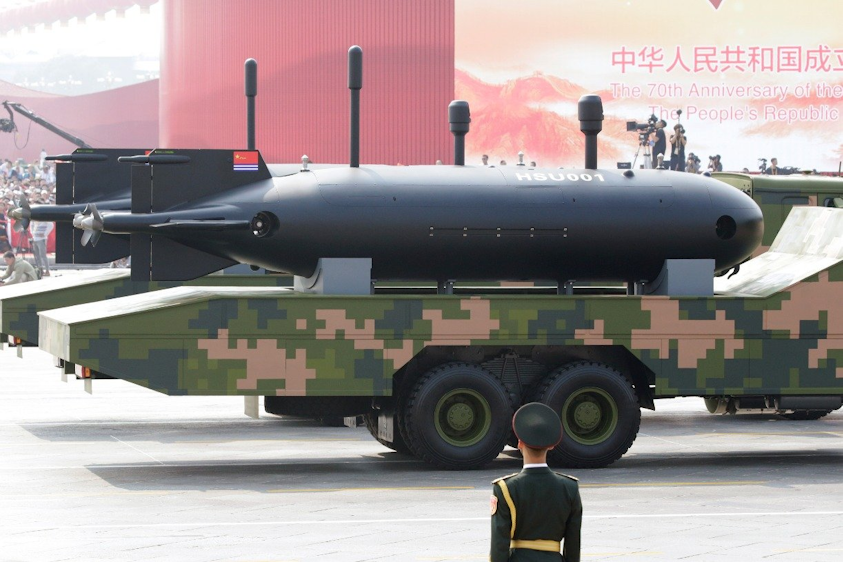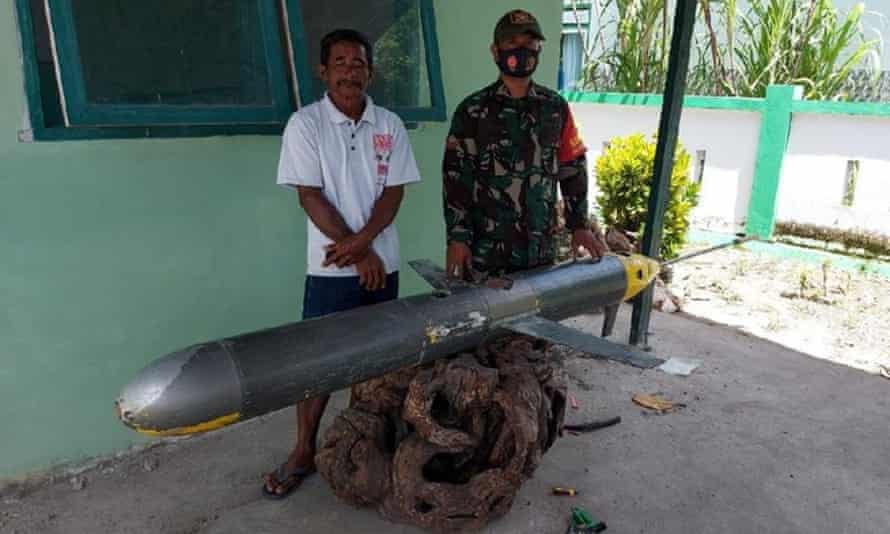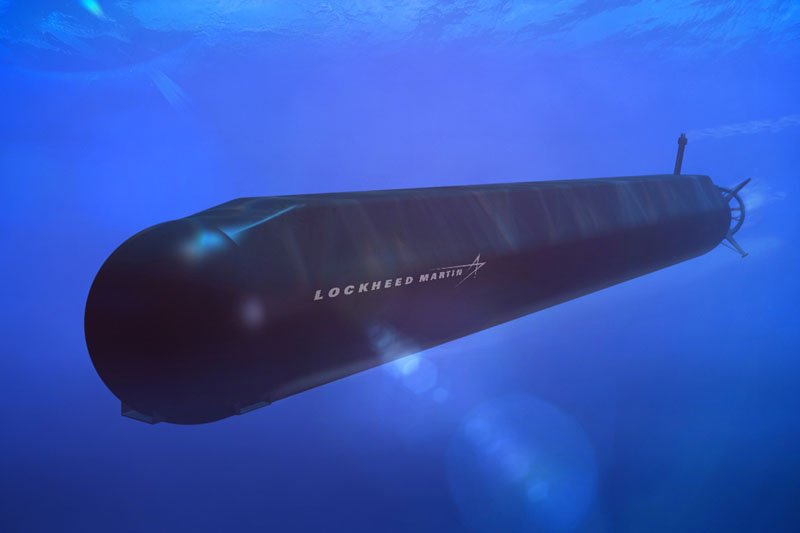China has announced it conducted secret naval drills in the Taiwan Strait even as the self-governing island reasserts its sovereignty and wants to safeguard its free and democratic system.
Not Taliban, ISIS Or Al-Qaeda, But China Is Haunted By Another Small ‘Islamic Outfit’ In Afghanistan
According to South China Morning Post, Beijing has recently declassified a report on the development of drone submarines, a project it had started in 2010. While many countries are developing or already developed unmanned underwater vehicles (UUVs), the timing of China’s announcement is interesting.
China has developed underwater drones capable of identifying, tracking, and attacking an enemy submarine without human interference, reported South China Morning Post. The development of the drones was part of a secret project, details of which were declassified last week.

Under this program, which was funded by the Chinese military, UUVs were being tested in the Taiwan Strait way back in 2010.
These were one of the first attempts by the country “to simulate the tracking and sinking of a submarine with the complete absence of humans in an open environment”, Professor Liang Guolong, of the Chinese submarine research institute, Harbin Engineering University, was quoted as saying by SCMP.
Why Chinese Stealth Fighter Jets Have ‘No Buyers’ In Sight Unlike The US’ F-35 & Russian Su-57 Jets?
According to the researchers, the drone was sent to patrol at a depth of 10 meters along a prearranged route.
While the report provided no specific location or route of the unmanned submarine, the coordinates from the maps in the papers suggest that the submarine may have been located near the coast of the Chinese province of Fujian or along the Taiwan Strait.
At yet another location, the combat capabilities of the drone were tested after noises of a submarine were issued from an underwater vehicle. The researchers said that the drone moving in a hexagonal pattern, used its sonar capabilities to identify the location of the vehicle emitting the sound of the submarine.
Professor Guolong mentioned that the robotic drones are capable of operating autonomously and can soon work in a coordinated manner in groups or packs, with adequate technological advancements.
China's unmanned submersible "Haidou-1" successfully conducted a 10,000-meter sea trial in the Mariana Trench. pic.twitter.com/34ZY7Eb7Kq
— Global Times (@globaltimesnews) June 8, 2020
He further said, in unmanned submarines “all the subsystems such as information acquisition, target detection, assessment, status and parameter control must have completely independent decision-making capabilities”.
It is believed that China is also working to develop unmanned platforms such as surface vessels, long-distance sailplanes, a research station on the floor bed of the disputed South China Sea as well as drones, capable of flying over and below the surface of the water.
US Laser Weapons Vs Chinese Swarm Drones: Can China Overwhelm The US With Sheer Numbers?
The China-Indonesia Tussle
It seems that for years, China has been using drone submarines in the disputed South China Sea to conduct underwater surveillance and reconnaissance operations. In December 2020, The Guardian reported that a Chinese UUV was recovered near Selavar Island in South Sulawesi, Indonesia.
#China's unmanned underwater vehicles keep turning up close to the #IndianOcean, capable of supporting naval operations, these drones draw attention to #China's increasing maritime ambitions & possible subsurface planning for the region https://t.co/ik3oxgJdHn
— d-atis☠️ (@detresfa_) December 30, 2020
The Indonesian military experts claimed it was a Chinese Sea Wing (Haiyi) UUV. Manufactured by the Shenyang Institute of Automation at the Chinese Academy of Sciences, the Sea Wing is believed to be capable of gathering critical data such as the temperature, salinity, turbidity, and oxygen levels of the water in real-time.
The data collected from the UUVs can be used for the effective operation of the submarines.
China’s UUV Program
Over the past two decades, China has invested heavily in the development of unmanned submarines. in July 2018, the director of the classified program at Shenyang Institute of Automation, revealed details of its Project 912 that uses artificial intelligence (AI) to conduct surveillance, mine-laying and attack missions, according to Military and Aerospace Electronics.
Many experts are of the opinion that the Chinese are keenly developing AI-enabled independent submarines, such as the extra-large unmanned underwater vehicles (XLUUVs) to counter the rising presence of the US in the Indo-Pacific.

In 2018, China reportedly unveiled its plans to develop an AI- simulated underwater base, comprising independent submarines. Under this, AI-simulated drone subs would conduct surveillance missions, download the gathered data, recharge itself and successfully make its way back to the base.
The base, proposed to be developed at a depth of 36,000 feet would be capable of gathering data regarding its surroundings, process the gathered data and effectively transmit it to the designated point — a ship or a ground base.
Not Taliban, ISIS Or Al-Qaeda, But China Is Haunted By Another Small ‘Islamic Outfit’ In Afghanistan
US & Japanese Programs
Last year, the US Navy received a recommendation to invest in approximately 50 extra-large unmanned underwater vehicles or the XLUUV, by the then-Defence Secretary Mark Esper and the Cost Assessment and Program Evaluation Office.
For the US Navy, an XLUUV must be a modular, open-architecture system, which can be equipped with various payloads and can be easily launched without the help of a host ship.
It is believed that the US Navy is also working on developing its arsenal of unmanned surface vessels. The Chief of Naval Operations Adm. Michael Gilday had stated that the future fleet of the US NAVY will have to include unmanned vehicles as well, to counter the rising Chinese aggression.

“We can’t continue to wrap $2 billion ships around 96 missile tubes in the numbers we need to fight in a distributed way, against a potential adversary that is producing capability and platforms at a very high rate of speed. We have to change the way we are thinking,” he said.
In 2019, the US Navy awarded a $274.4 m contract to Boeing to manufacture five Orca XLUUVs, reported Naval Technology. The Orca XLUUVs are expected to be based on the Echo Voyager prototype UUV manufactured by Boeing.
The vehicle is believed to be 15.5 m in length and equipped with a payload capacity of 56.6 cubic meters and 7 tons of dry weight. The vehicle can be used to conduct anti-submarine warfare, anti-surface warfare as well as strike missions.
The development of unmanned undersea vehicles also features in the defense plans of Japan. Japan has been embroiled in a tense conflict with China, over the Senkaku Islands located in the East China Sea. The Japanese plans comprised unmanned vehicles, approximately 10 m long and equipped with long-range surveillance capabilities.
The Taiwan Issue
Taiwan has asserted that it is a sovereign state which seeks to maintain a stable relationship with mainland China and wants to safeguard its free and democratic system, according to its foreign ministry.
Earlier this week, the Deputy Prime Minister of Japan, Taro Aso, had promised Japanese help to Taiwan in the event of a Chinese invasion of the island nation.
Delineating the US policy towards Taiwan, White House coordinator for the Indo-Pacific Kurt Campbell stated that the US supports the strong “unofficial relationship” with Taiwan, Taiwan News reported.
He also mentioned that Washington is fully aware of the “sensitivities” in the relationship between China and Taiwan, and stressed that the US does not support the independence of Taiwan. He, however, also mentioned that the US recognizes Taiwan’s “right to live in peace”.
In a tacit warning to Beijing, the US official stated that the international response to the Chinese crackdown on Hong Kong may serve as a prelude to the future belligerence of China with regard to Taiwan. He maintained that the US will not hesitate to send strong signals to China, in case the country “takes steps that are antithetical to international order”.
Read More
- Watch: The Ultimate Dogfight Between US & Russian Fighter Jets Over A ‘Top-Secret’ Air Base In Nevada
- Why India’s Ladakh Region Is Crucial For China’s Rise As An Economic Super-Power?




